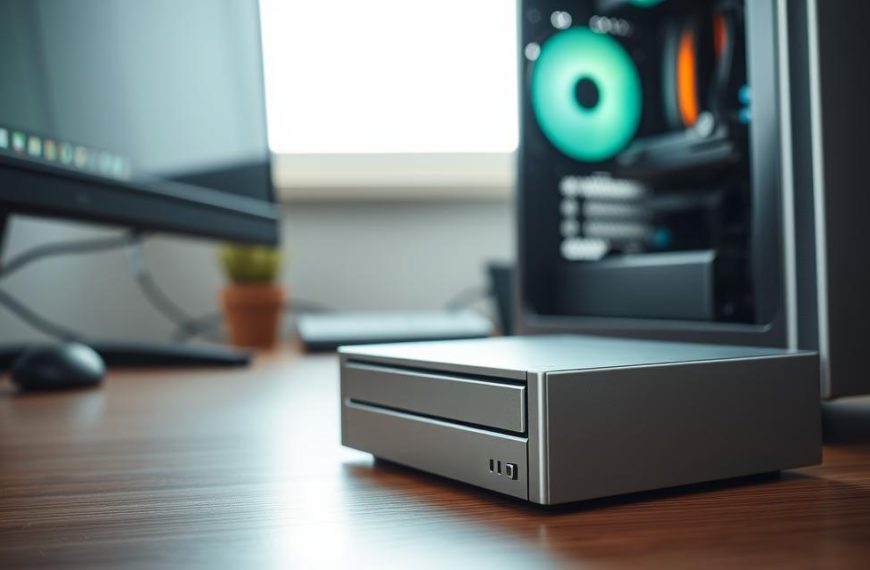Bitcoin transactions are known for their decentralized nature, but the time they take can vary. On average, a Bitcoin transaction takes between 10 minutes to an hour to complete. This duration depends on several factors, including network congestion and transaction fees.
Network congestion plays a significant role in transaction speed. When the Bitcoin network is busy, it can slow down the process. Higher fees often prioritize transactions, ensuring they are processed faster. This is crucial for users making time-sensitive investments or purchases.
Unlike traditional banking systems, Bitcoin operates without a central authority. While this offers advantages, it can also lead to delays. Innovations like the Lightning Network and SegWit are addressing these issues, improving transaction efficiency.
Understanding the timing of Bitcoin transactions is essential for crypto users. Whether you’re using a Bitcoin ATM or transferring funds online, knowing what to expect can help you plan better.
Introduction to Bitcoin Transactions
Bitcoin transactions operate on a decentralized network, offering a unique approach to financial exchanges. Unlike traditional banking systems, there is no central authority overseeing the process. This decentralization ensures transparency and security, making Bitcoin a trusted choice for many users.
When you initiate a Bitcoin transaction, it starts in your wallet. From there, it moves to the mempool, a waiting area for unconfirmed transactions. Miners then validate these transactions and add them to the blockchain. This flow ensures every step is secure and verifiable.
For a transaction to be considered secure, it requires six confirmations. Each confirmation takes about 10 minutes, totaling roughly one hour. This design, introduced by Satoshi Nakamoto, ensures the integrity of the blockchain.
Once a transaction is added to the blockchain, it becomes irreversible. This feature protects against fraud but also means errors cannot be undone. Unlike traditional banks, there is no customer support to resolve transaction issues.
Bitcoin processes approximately seven transactions per second, which is slower compared to Ethereum’s 12-second transaction speed. However, innovations like the Lightning Network are improving Bitcoin’s efficiency, making it more competitive in the crypto space.
How Long Does a Cryptocurrency Transfer Take?
The speed of cryptocurrency transactions can vary widely depending on several factors. On average, a Bitcoin transaction takes about 10 minutes for one confirmation and up to an hour for six confirmations. This ensures the transaction is secure and irreversible.
Network congestion is a major factor affecting transaction speed. During periods of high activity, like price volatility events, the mempool—a waiting area for unconfirmed transactions—can become crowded. This leads to delays, especially for transactions with lower fees.
Miners prioritize transactions with higher fees, as they are incentivized to maximize their earnings. This means users willing to pay more can enjoy faster processing times. However, during peak times, even high-fee transactions may face delays.
In extreme cases, transactions with low fees can take up to 72 hours to process. This is particularly common during network congestion. For users needing faster transfers, solutions like the Lightning Network offer sub-minute transaction times, making them ideal for urgent needs.
When comparing Bitcoin to other cryptocurrencies, Ethereum stands out with an average transaction time of 12 seconds. This highlights the differences in blockchain design and scalability. Users should consider these variations when choosing a platform for their transactions.
To avoid errors, always verify wallet addresses using the penny test strategy. This involves sending a small amount first to confirm the address is correct. Additionally, be aware of the tax implications of crypto transfers, as they may trigger reporting requirements.
How Bitcoin Transactions Work
Bitcoin transactions rely on a network of miners and a structured process to ensure security and efficiency. These transactions are validated and added to the blockchain, a decentralized ledger that records all activity. Understanding this process is key to navigating the Bitcoin ecosystem.
The Role of Miners
Miners are essential to the Bitcoin network. They solve complex hash puzzles to validate transactions and create new blocks. For their efforts, miners earn $12.5 per block plus transaction fees. This incentivizes them to maintain the network’s integrity.
The mining process involves grouping transactions into a block and solving a cryptographic puzzle. Once solved, the block is added to the blockchain. This ensures that all transactions are secure and irreversible.
Mempool and Transaction Queues
Before being added to a block, transactions wait in the mempool, a temporary storage area. The mempool acts as a queue, prioritizing transactions based on fees. Higher fees often lead to faster processing times.
Blocks are created approximately every 10 minutes. During periods of high activity, the mempool can become congested, causing delays. This is where the Replace-by-Fee (RBF) protocol comes into play, allowing users to increase fees for faster confirmations.
Orphaned blocks, though rare, can occur when two miners solve a block simultaneously. In such cases, the network selects one block, and the other becomes orphaned. Transactions in orphaned blocks are returned to the mempool for reprocessing.
Whether using custodial or non-custodial wallets, confirmation speeds can vary. Custodial wallets often provide faster confirmations, while non-custodial wallets offer greater control over the process.
Factors That Impact Bitcoin Transaction Time
Several elements influence the speed of Bitcoin transactions, making it essential to understand their impact. From network activity to wallet features, each factor plays a role in determining how quickly your transaction is processed. Let’s explore the key aspects that affect Bitcoin transaction time.
Network Congestion
The bitcoin network can experience periods of high activity, leading to delays. For example, during the 2021 bull run, the mempool—where unconfirmed transactions wait—was flooded. This caused significant congestion, with some transactions taking hours or even days to process.
Historical data from January 2018 to April 2020 shows that average confirmation times spiked during peak periods. Users can monitor network activity to avoid these delays. Tools like dynamic fee calculators in modern wallets help estimate the best time to send transactions.
Transaction Fees
Fees are a critical factor in transaction speed. Miners prioritize transactions with higher fees, as they aim to maximize earnings. During periods of congestion, paying a higher amount can ensure faster processing.
However, the fee market is dynamic. Users should avoid overpaying during low-activity periods. Modern wallets often provide fee recommendations based on current network conditions, helping users strike the right balance.
Wallet Type and Features
The type of wallet you use can also affect transaction speed. Hardware wallets, while secure, may have slower confirmation rates compared to software wallets. Custodial wallets, on the other hand, often process transactions faster but come with limitations during peak times.
Innovations like SegWit adoption have reduced transaction sizes, improving efficiency. Additionally, UTXO consolidation strategies can help users optimize their transactions by reducing the number of inputs required.
| Factor | Impact on Transaction Time |
|---|---|
| Network Congestion | High activity increases delays |
| Transaction Fees | Higher fees prioritize transactions |
| Wallet Type | Hardware vs. software wallets affect speed |
Tips to Speed Up Bitcoin Transactions
Optimizing Bitcoin transactions can save you time and fees. By understanding the factors that influence transaction speed, you can make informed decisions to ensure your transfers are processed efficiently. Here are some practical tips to help you get started.
Setting Higher Fees
One of the most effective ways to speed up Bitcoin transactions is by setting higher fees. Miners prioritize transactions with higher fees, as they aim to maximize their earnings. During periods of network congestion, this strategy can significantly reduce waiting times.
Tools like Earn.com’s fee estimator can help you determine the optimal fee for your transaction. By paying a slightly higher amount, you can ensure your transfer is processed within minutes rather than hours.
Using Replace-By-Fee (RBF)
The Replace-By-Fee (RBF) protocol allows you to boost the fee of a stuck transaction. This feature is particularly useful when network activity is high. For example, Electrum wallet users can implement RBF to resubmit their transaction with a higher fee, ensuring faster confirmations.
A case study showed that using RBF led to 89% faster confirmations. This makes it a valuable tool for users who need urgent transfers.
Timing Your Transactions
Timing is another critical factor in speeding up Bitcoin transactions. Global peak usage times, such as North American evenings, often lead to higher fees and delays. By scheduling your transfers during off-peak periods, you can save up to 30% on fees.
Batch transactions during low-congestion windows can also improve efficiency. Additionally, managing your UTXO (Unspent Transaction Output) can reduce transaction size, further optimizing speed.
Using SegWit-enabled wallets like BlueWallet can enhance transaction efficiency. These wallets support smaller transaction sizes, reducing fees and processing times.
Using Bitcoin ATMs for Faster Transactions
Bitcoin ATMs provide a quick and convenient way to handle transactions. With over 34,000 machines worldwide, finding a bitcoin atm near me is easier than ever. These devices simplify the process of buying and selling Bitcoin, making them ideal for both beginners and experienced users.
How Bitcoin ATMs Work
Using a Bitcoin ATM is straightforward. Start by scanning your wallet’s QR code. Next, insert cash into the machine. The ATM then processes your transaction and sends the Bitcoin to your wallet. This entire process often takes just a few minutes, making it much faster than traditional online methods.
Major operators like CoinFlip, Bitcoin Depot, and Coin Cloud dominate the market. These companies ensure reliability and ease of use. For those concerned about privacy, transactions under $900 typically require no ID, offering an added layer of anonymity.
Benefits of Bitcoin ATMs
Bitcoin ATMs offer several advantages. First, they provide instant confirmations, which is crucial for merchants and time-sensitive transactions. Second, their fee structures, ranging from 5% to 15%, are often more predictable than blockchain fees.
Locator tools like CoinATMRadar and Crypto Dispensers make finding a machine simple. Whether you’re in a busy city or a rural area, these tools ensure you’re never far from a Bitcoin ATM. For those looking to save time and avoid delays, Bitcoin ATMs are a reliable solution.
Innovations in Bitcoin Transaction Speed
New technologies are transforming Bitcoin transactions, making them faster and more efficient. Two breakthroughs—the Lightning Network and Segregated Witness (SegWit)—address scalability and speed limitations. These solutions reduce delays and fees while maintaining security.
The Lightning Network
The Lightning Network is a layer-2 solution enabling instant, low-cost payments. It uses payment channels to process transactions off-chain, bypassing blockchain congestion. This system can handle over 1 million transactions per second (TPS), a massive leap from Bitcoin’s base layer.
Adoption is growing rapidly, with 5,000+ active nodes worldwide. Users open channels by locking funds, then transact privately until closing the channel. This approach slashes fees and wait times, ideal for microtransactions or retail use.
Segregated Witness (SegWit)
Activated in August 2017, SegWit optimizes blockchain space by separating signature data from transaction details. This fix also resolves transaction ID malleability, a flaw previously exploited for fraud.
- Address formats: SegWit uses “bc1” prefixes, while legacy addresses start with “1.”
- Fee savings: Transactions are 40% cheaper due to smaller sizes.
Future upgrades like Taproot will further enhance privacy and efficiency. Sidechains and drivechains may also expand Bitcoin’s capabilities without altering its core protocol.
Together, these innovations offer a scalable solution for Bitcoin’s growing user base. As adoption increases, transaction speeds will continue improving, solidifying Bitcoin’s role in global finance.
Conclusion: Mastering Bitcoin Transaction Times
Mastering Bitcoin transaction times requires understanding key strategies and tools. Optimizing fees and scheduling transfers during off-peak hours can significantly reduce delays. Choosing wallets with RBF and SegWit support ensures faster confirmations and lower costs.
For urgent needs, Bitcoin ATMs offer instant confirmations and convenience. Innovations like the Lightning Network are reshaping the future, enabling mass adoption with near-instant speeds. Always double-check wallet addresses and network compatibility to avoid errors.
Before finalizing any transaction, verify the amount, address, and network. Use Bitcoin ATM locator tools to find the nearest machine for quick transfers. By applying these strategies, you can navigate Bitcoin’s ecosystem with confidence and efficiency.















